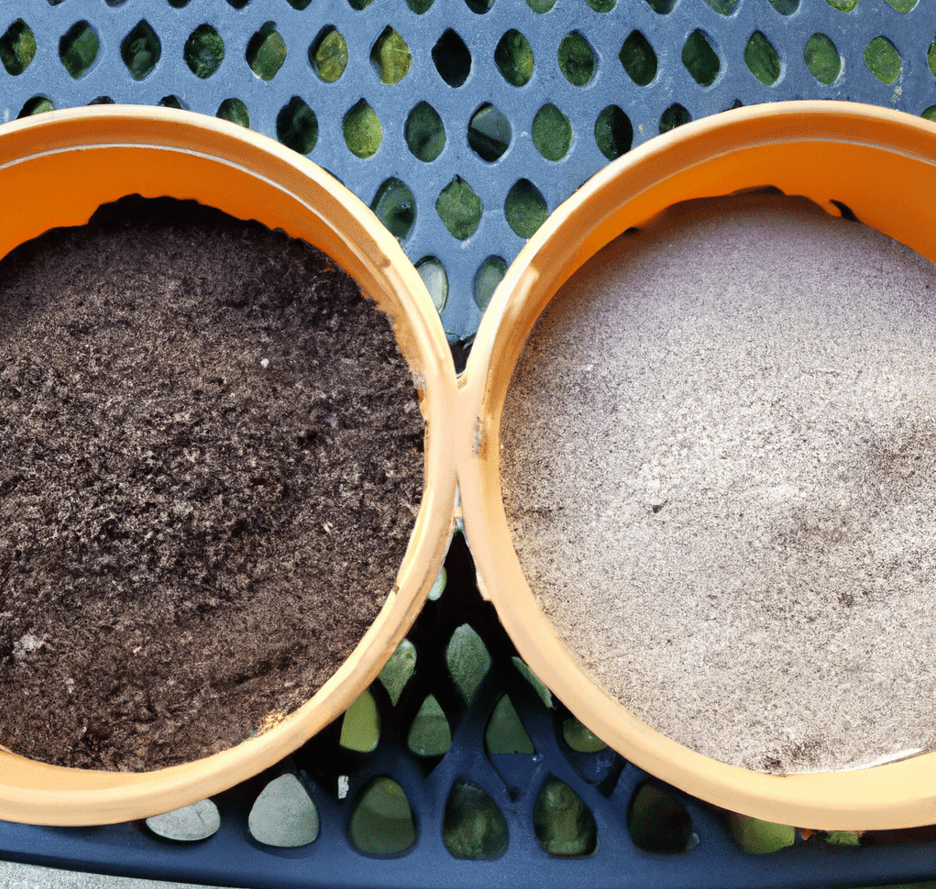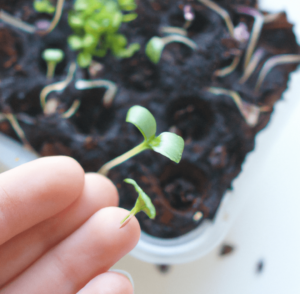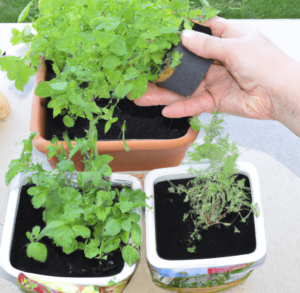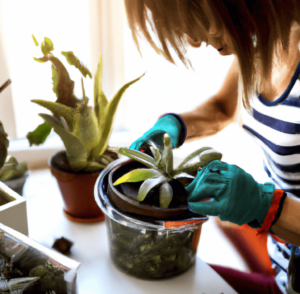Planting a new garden but confused about the right growing medium to use? The terms potting soil and potting mix are often used interchangeably so they can be quite confusing, especially if you’re new to gardening. On top of that, manufacturers may use a variety of different names to label these products. The right kind of soil mix is as crucial as the mulching technique used for protecting plants, and preparing the right kind of compost to feed them all the necessary nutrient content.
In this article, we will highlight the difference between potting soil vs potting mix and which healthy garden soil is best to use for your flower beds, indoor plants, and container plants. You can also learn more about the lifespan of different mulches, difference between wood chips and mulches and which works with your potting mix through our complete gardening guides. Keep on reading to find out more.

Potting Soil vs. Potting Mix – Difference in Definition
Potting Soils
You can find potting soil in any gardener’s marketplace under the label of ‘garden soil’ and is mostly recommended for in-ground uses. Potting soil is a blend of organic matter such as true dirt, sand, loam, clay, and several mineral elements. A premium quality potting soil that comes in a bag will mimic the properties and nutrient content of pure garden soil found in the ground.
Potting soil is best used for landscapes and it isn’t the best option for container plants. Instead, you can make good use of it when filling large, raised beds. It can also be used to rejuvenate poor quality soil. Additionally, potting soil mixture is usually mixed with compost to boost its nutritional value and help nourish your soil better.

Potting Mixes
Potting mix does not contain any natural or true dirt; instead, it is a blend of organic matter such as pine bark, spaghnum moss, peat moss, aged bark, etc., as well as a range of compounds that improve the drainage of your soil. Potting mix bags will sometimes come with a clear label that states ‘soilless potting mix’ or ‘soilless medium’. The best way to utilize potting mix is in container gardening for indoor plants or outdoor gardens. Potting mixes may also contain slow-release fertilizers.

Potting Soil vs. Potting Mix – Summary
Potting soil and potting mix are two different agents that can be extremely helpful depending on your garden’s needs and also the type of gardening you are doing – container gardening, starting seeds, nourishing garden soil, potting or repotting, etc. Each type of gardening has its own unique requirements that can be fulfilled by either the best potting soil, or a miracle gro potting mix.
Key Differences to Note When Purchasing Potting Soil or Potting Mix

Which Potting Mixture is Best for You?
If you are wondering which of these is best for your gardening project, then the answer is simple! If you are seed starting or container gardening, be it indoor or outdoor, then the right option for you is to pick a premium potting mix. The blend of nutrients and key ingredients stated above ensures that your mix retains the necessary moisture needed for plant and seed growth. There is also no risk of compactness to allow air space for weak roots to grow.
But, perhaps the biggest advantage of using a soilless medium with peat moss, aged bark, etc., is that your plants will be protected against any diseases, weed seeds, or fungi infections. Potting mixes are sterile and more controlled than potting soil.
On the other hand, for non-container gardening or landscaping, a premium quality potting soil or garden soil is ideal to use. It is primarily used to fill raised beds or large elevated planters. As potting soil does consist of healthy garden soil and true dirt, it is more dense and may become compacted, resulting in poor water drainage.
Although potting soil consists of excellent nutrients to feed your plants, it is a less controlled growing medium and you will need to add amendments and other elements to improve on drainage, soil health and texture.
Superior Weight, Aeration, and Drainage
For all forms of container gardening, potting mixes are a far better choice for many reasons but three stand out above all else: better weight, aeration, and drainage properties.
The texture of a potting mix is airy, fluffy, and light, which makes it excellent for the purpose of water drainage. In fact, this allows for water to seep through easily and nourish the roots of your plants in the container. The airy and fluffy texture also ensures root aeration for your potted plant.
While garden soil or potting soil is packed with better nutrients that can help growing plants, it lacks the same drainage qualities of a potting mix that prevents root rot due to water logging and stagnation.
Finally, these three qualities of potting mixes also make your potted plants lighter in weight which can make them easier to move and assemble in pots. Potting soil is heavier, denser, and is prone to fungal infections, but that doesn’t make it less useful or handy. It’s simply used for a different type of gardening. Using it in containers is not the best option as potting soil holds too much water and does not allow for sufficient drainage or breathing for the roots.
Varieties of Potting Mixes for Your Gardening Projects
Almost all potted plants will benefit from a premium quality potting mix but there are some species that may require a special type of potting mixes that provide an even better drainage as well as higher or lower pH levels. You can find custom formulated potting mix for such plant types.
1. Moisture-Control Potting Mixture
As its name suggests, this type of potting mixture works to control moisture levels and absorb more water than average potting mixes. This is usually due to certain added ingredients such as coir, moss, sphagnum, and even non-toxic polymer.
2. Succulent/Cactus Mix
If you are growing cactus or other forms of succulents, then you will require fast drainage. This type of potting mix contains forest products as well as pH levelers such as oyster shell lime that helps keep your mix in a more alkaline range. You can also find more variation of these mixes in the form of palm and citrus potting mixes.
3. Orchid Mix
Orchids can be quite fragile, thus they require a potting mixture which does not retain too much water and less air as in case of average all-purpose potting mix. Orchid mix consists of bark that helps with drainage and better airflow necessary to grow these plants.
4. Organic Mix
If your potting mix packet says OMRI (Organic Materials Review Institute), it means that all the ingredients present inside are 100% organic, including fertilizers which are made of bloodmeal or bone meal.
5. African Violet Mix
This mix consists of pH levelers such as dolomitic lime that keeps your mix slightly more acidic between 6.0 – 6.5.
Potting Soil or Potting Mix – Which Lasts Longer?
Potting soil is made with a blend of dirt and other organic, non-toxic minerals, it will last you longer. However, despite its nutrient-rich content, potting soil requires fertilizer or manure periodically for it to work at its best.
On the other hand, this technique cannot be used for potting mixes. The organic materials inside a potting mix will eventually disintegrate and break down over time. When this occurs, the potting mix becomes useless.
Final Verdict on the Best Mix for Your Gardening Projects
Both potting soil and potting mix are unique in their own way and can be used to help your plants grow better and feed on the necessary nutrients. Before you purchase a bag of one or the other, you must consider all the features and elements listed above as well as determine the gardening task at hand which will determine whether you require potting soil or potting mix.
Frequently Asked Questions
Is it possible to reuse potting soil?
Yes, it is possible to reuse potting soil, but keep in mind that there may be a risk of disease and other infections if this process is not carried out correctly. If you notice molds or nasty odors from your own potting soil, then a great way to get rid of this is by spreading it out under the sun and letting it dry out completely to kill off any pathogens.
You can also add coconut husks or coir or even peat moss to make your soil lighter in texture. You can now reuse it into flower beds and compost pile.
When should I use potting soil instead of potting mix?
You should use potting mix if you are planning on container gardening. On the other hand, if you are growing plants without a container, then you should select a potting soil.
How do I make organic potting mix?
You can make your own organic potting mix by including garden loam (sterile), peat moss, sand, etc. 1 part peat moss or matured compost can be blended with 1 part garden loam or topsoil and part clean sand or perlite.







